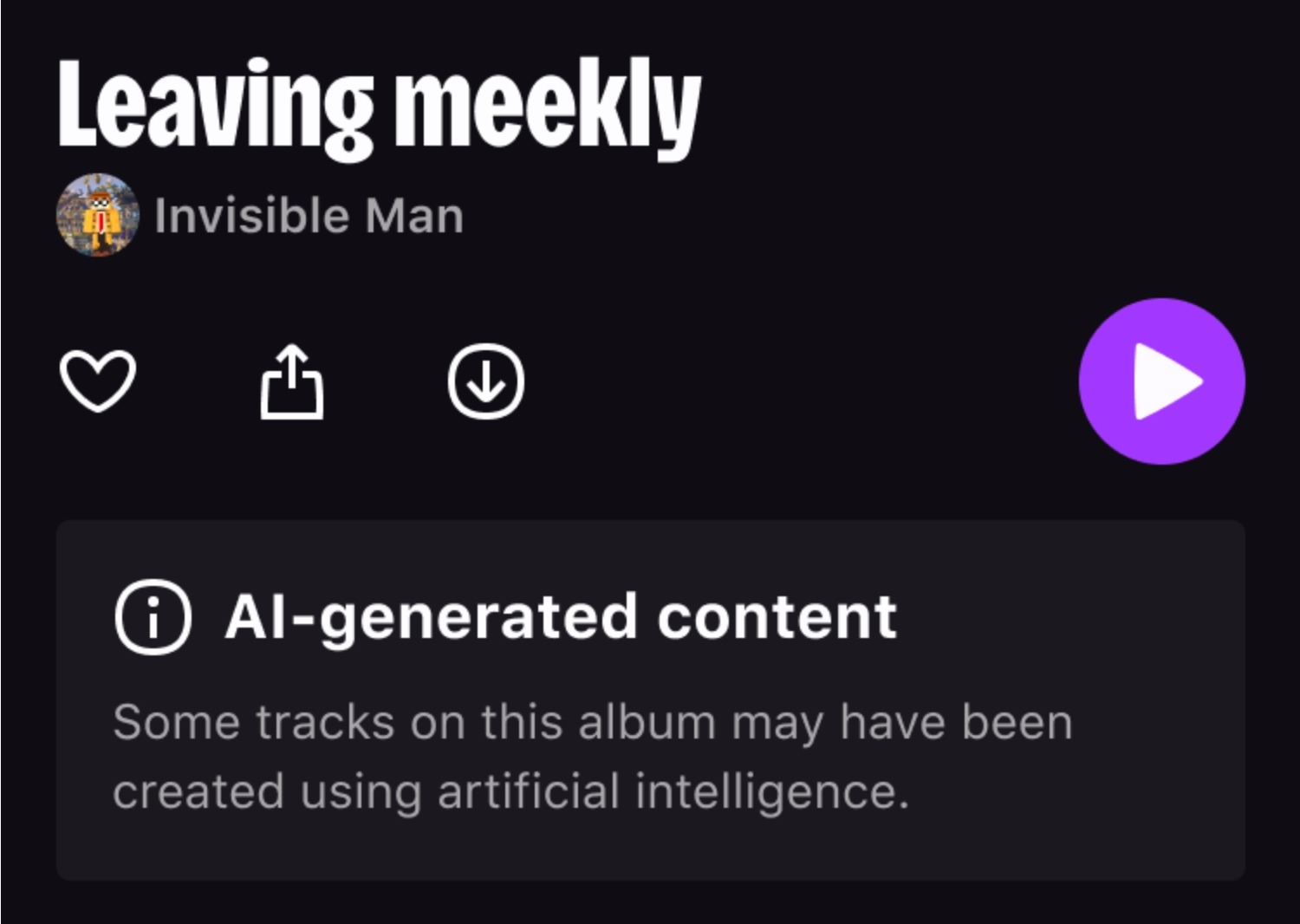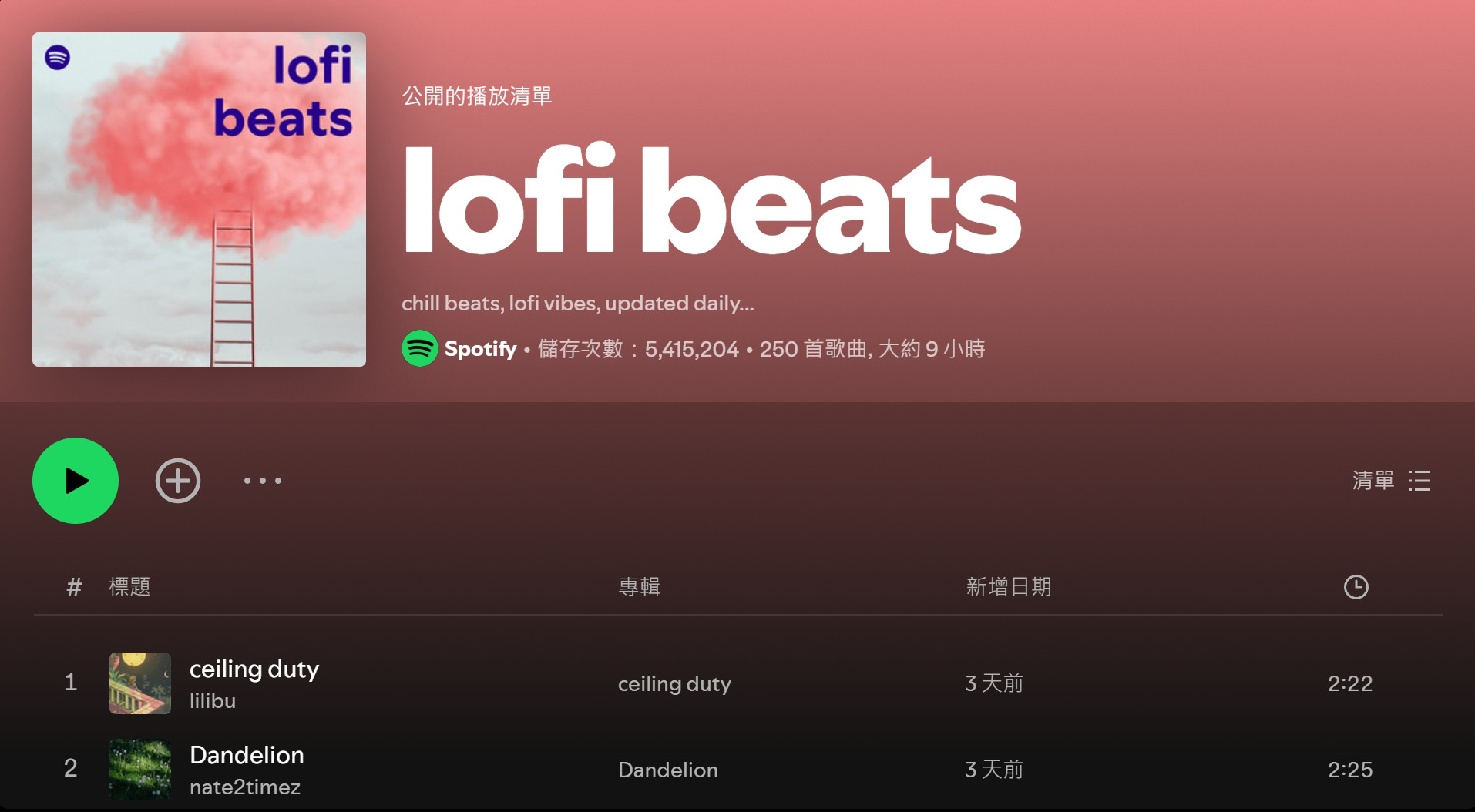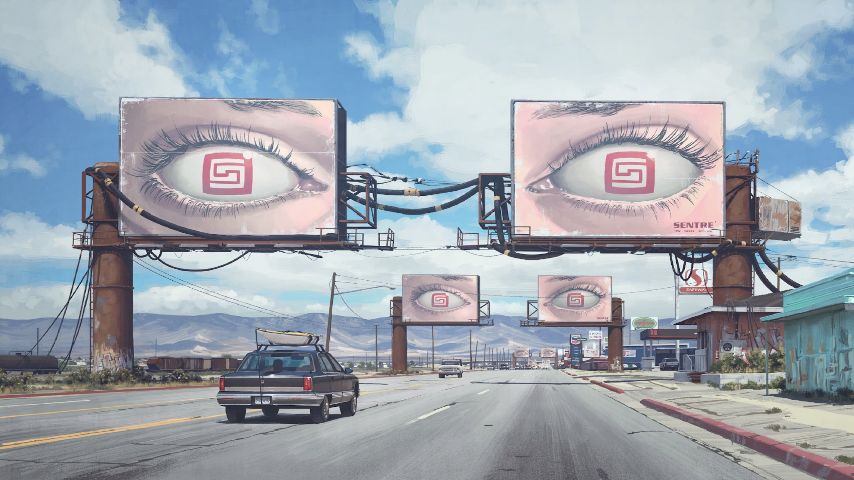Recently, an indie band called The Velvet Sundown has unexpectedly gone viral on Spotify, amassing millions of monthly listeners in just a few weeks. The Velvet Sundown has quietly appeared on countless users' Discover Weekly playlists without any promotion, tours, or influencer covers. There's hardly any background information on the band members, sparking a lot of online chatter.
Many Spotify users are starting to suspect that The Velvet Sundown might not be made up of "humans" at all. So, who are they really?
Who is The Velvet Sundown? What's Their Deal?
The name The Velvet Sundown is a mash-up of the legendary psychedelic rock band The Velvet Underground and the Toronto art rock band Sunset Rubdown. Is it a tribute or a deliberate misdirection? It's hard to say. Their album covers are clearly AI-generated:
Imagine a surreal desert landscape with a staircase leading to an archway suspended in mid-air. A giant eye floats in the sky next to a glowing red sun. The background features a calm sea and soft clouds, with warm, gentle lighting in orange-red tones. The style pays homage to René Magritte and de Chirico, with soft hand-drawn strokes and minimalist composition, creating a dreamlike atmosphere.
Yes, I reverse-engineered and generated this prompt with the help of ChatGPT.

The Velvet Sundown released two albums just two weeks apart, with covers that look like they were haphazardly generated by AI.
What's even more suspicious is their release schedule: their debut album "Floating on Echoes" dropped on June 5, followed by a second album "Dust and Silence" just two weeks later. Their third album, "Paper Sun Rebellion," is set to release on July 14. This rapid production and release pace is unusual for a typical music group.
Listening to their music, you might picture a group of rugged middle-aged men in cowboy hats singing country tunes. But when you search online, there's no background info on the band members, and their Instagram is filled with AI-generated images, with not a single real group photo in sight.
An Intricate Prank
On June 25, a Reddit user exposed them as "100% AI-generated," by which time they had already surpassed 300,000 monthly listeners. Media coverage followed, only boosting their popularity further, and now they have over a million monthly listeners.

As of this writing, The Velvet Sundown's monthly listeners have reached this staggering number.
Meanwhile, an account named @Velvet_Sundown appeared on X, with someone claiming to be the band's spokesperson, Andrew Frelon, angrily stating that they are an "indie band from a cramped California bungalow, using real instruments, heart, and soul, created through long, sweaty nights," not AI-generated.
Andrew Frelon later admitted in a Rolling Stone interview that they used the AI music generation platform Suno, but emphasized that a lot of human effort was involved in the creative process. This interview was picked up by several mainstream media outlets, and the internet briefly accepted The Velvet Sundown as an AI gimmick. That was until Andrew Frelon revealed more...

It seems The Velvet Sundown's composing environment is indeed quite cramped. (Source: thevelvetsundownband)
It turns out Andrew isn't a band member at all; he's an AI-generated art enthusiast with a background in cybersecurity. In a Medium post, Andrew confessed that after noticing the reports on June 29, he realized there was no official account online. So, he thought, "What if I pretended to be them?" Thus began this prank-like social experiment.
He reactivated an idle X account, renamed it @Velvet Sundown, used ChatGPT to generate tweets, tagged journalists, and created a fake Gmail for media contact. He even listed 26 journalists he interacted with, including those from Rolling Stone, The Washington Post, Wired, and TechCrunch. Knowing the pressure of media deadlines, he deliberately responded just before their deadlines, leaving them no time to verify.
Why did he do it? He claims it was to highlight the media's lack of basic fact-checking mechanisms, so he decided to conduct a "red team operation": a mock attack to help, using a meticulously planned prank to expose the unreliability of news verification. According to him, it was to make journalists aware of the issue, preventing more irresponsible fake news in the future.
Beyond the Hoax: Spotify's AI Strategy and Verification
Currently, the "real" The Velvet Sundown has quietly updated their Spotify page with a group bio, describing it as a music and visual experiment combining human creativity and AI collaboration, an ongoing artistic provocation questioning the boundaries of creativity and music essence in the AI era. The mastermind behind this experiment remains undisclosed.
However, whether it allowed Andrew Frelon to seize the opportunity or enabled The Velvet Sundown's so-called "artistic provocation" to succeed, it all ties back to the ambiguous stance of major music streaming platforms on AI music.
Both Spotify and Apple Music have an open attitude towards AI-generated songs, lacking any AI labeling mechanism. CEO Daniel Ek has publicly stated that he sees value in AI technology for music creation but emphasizes that "it cannot mimic human artists without their consent."
In contrast, the French streaming platform Deezer takes a much clearer stance, being one of the few platforms siding with musicians. In response to the rise of AI music, they've actively implemented a series of concrete measures, not only clearly labeling AI-created songs but also avoiding including them in recommendation playlists. They've even adjusted their royalty system to prioritize real creators with stable monthly listeners, trying to prevent original music from being buried by algorithms.

Deezer takes AI music intrusion seriously and has proposed a series of concrete preventive measures. The most basic of which might be: AI labeling. (Source: Deezer)
Could They Be Spotify's "Ghost Artists"?
The viral rise of The Velvet Sundown might not be a coincidence. Earlier this year, pop culture critic and university lecturer Liz Pelly revealed in her book "Mood Machine: The Rise of Spotify and the Cost of the Perfect Playlist" Spotify's "Perfectly Fitting Content" (PFC) plan.
In simple terms, Spotify collaborates with so-called "ghost artists," creators who are usually unnamed and have unclear backgrounds. Their works are sometimes hard to determine if they were genuinely made by humans. The platform then floods popular playlists like "Relax," "Lo-fi," and "Focus" with their music, replacing real musicians' works.

Could your lo-fi playlist be secretly filled with ghost musicians by Spotify?
The logic is simple: compared to buying licensed music from major labels or negotiating revenue sharing with musicians, ghost music is not only cheaper and easier to negotiate but also saves a lot on royalty expenses. This also ties into Spotify's revenue-sharing mechanism: the platform pools subscription fees and ad revenue, then distributes royalties based on each song's share of total plays. The more plays, the more you earn.
This raises the question: could The Velvet Sundown be one of these "ghost artists"? But as of now, we can't be sure.
Looking back at those virtual idols: the lyrics and music of Saja Boys are crafted by professional musicians, with visual design and character settings meticulously created by production teams; each member of PLAVE has a real person behind them, with distinct personalities and live performance skills; and VTuber culture is essentially a blend of real human emotions and performance expression. Even if these creations use AI as a "tool," the core must still be "human."
We don't know if there will come a day when listening to AI songs becomes a mark of poor taste, but until then, this cheap, fast, and opaque AI music mass production model might have already left the music industry scarred.








